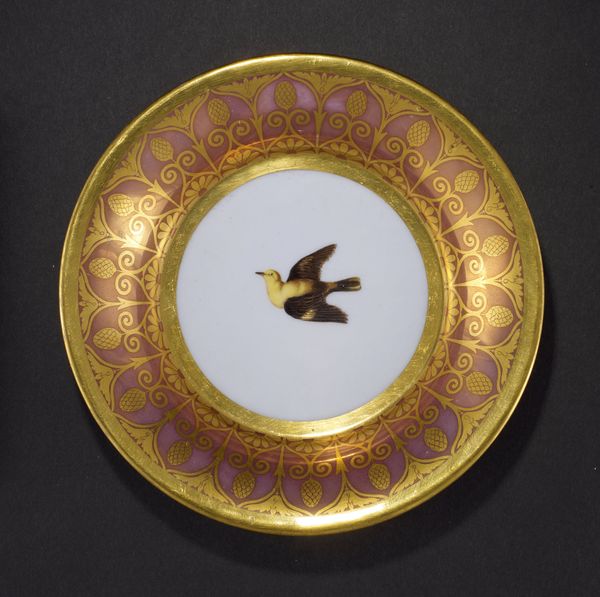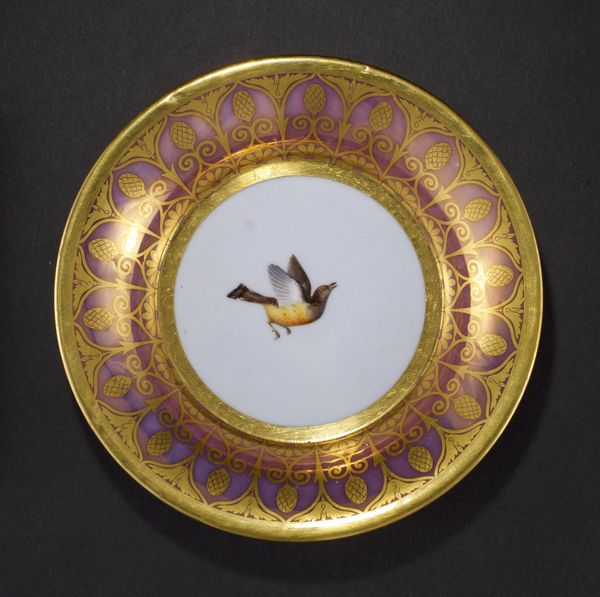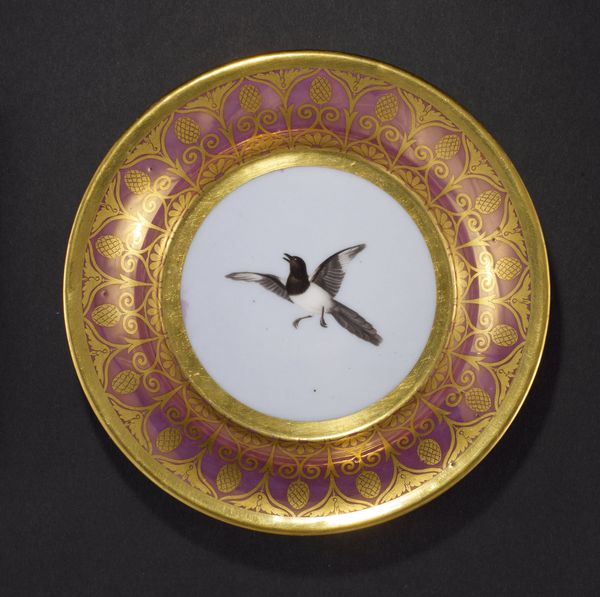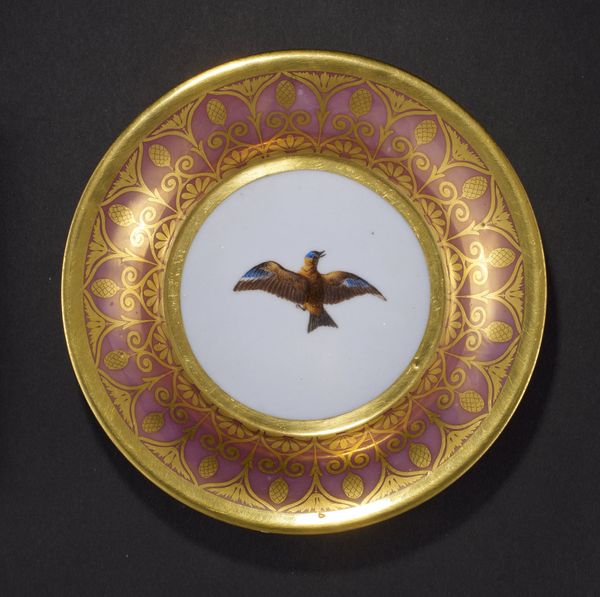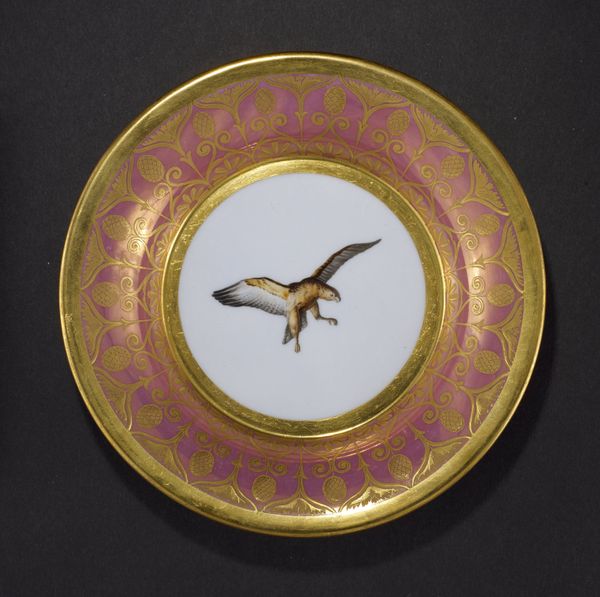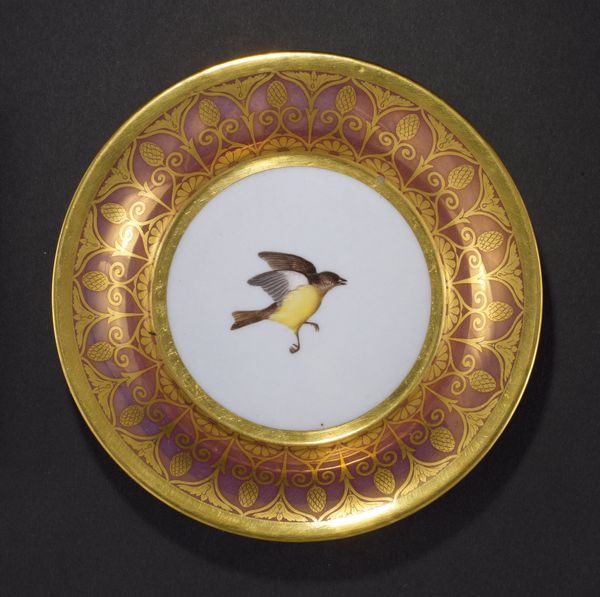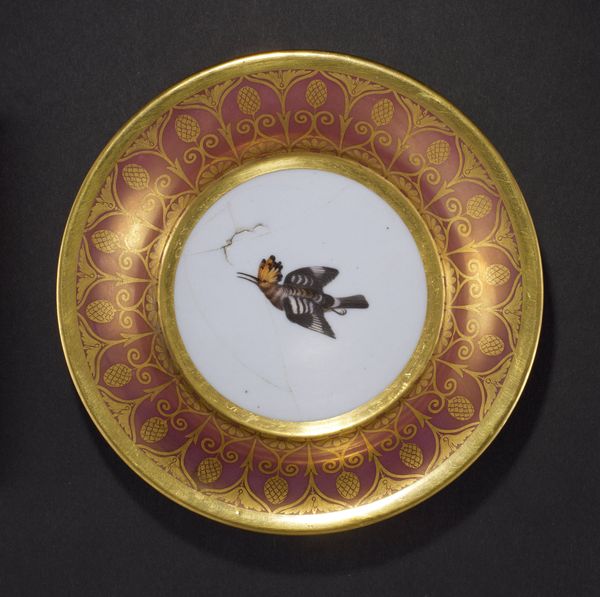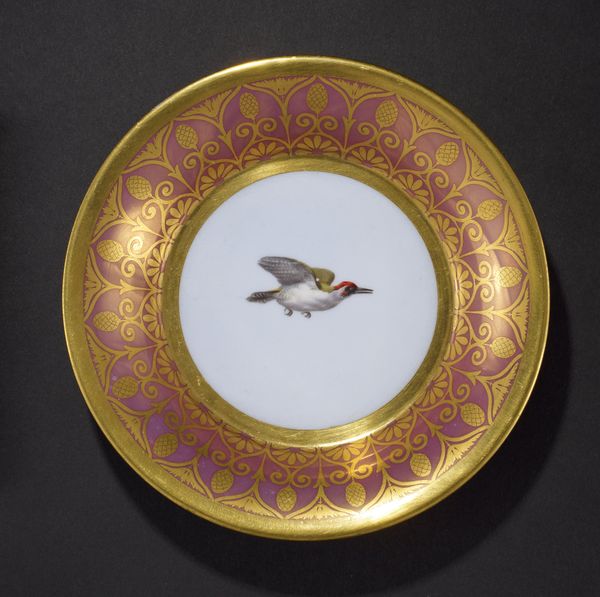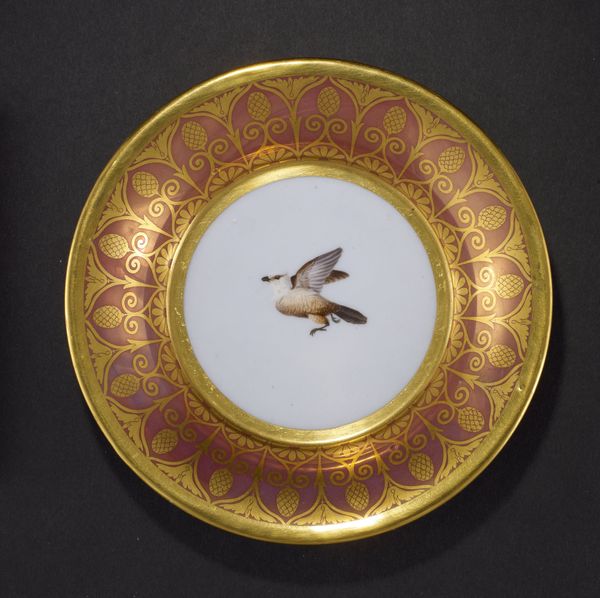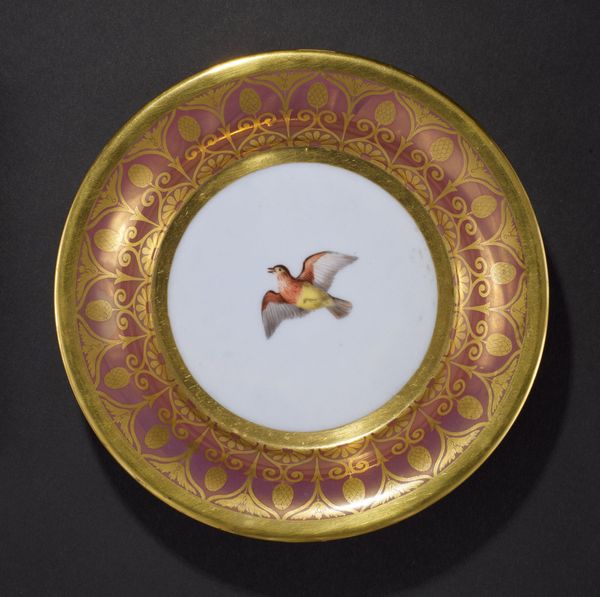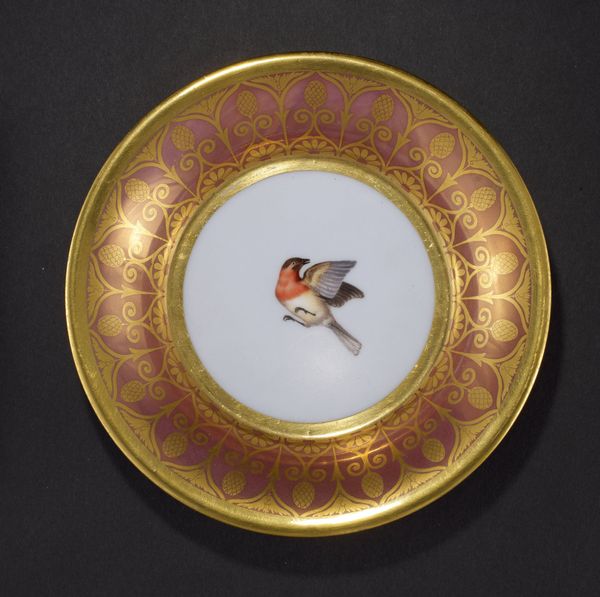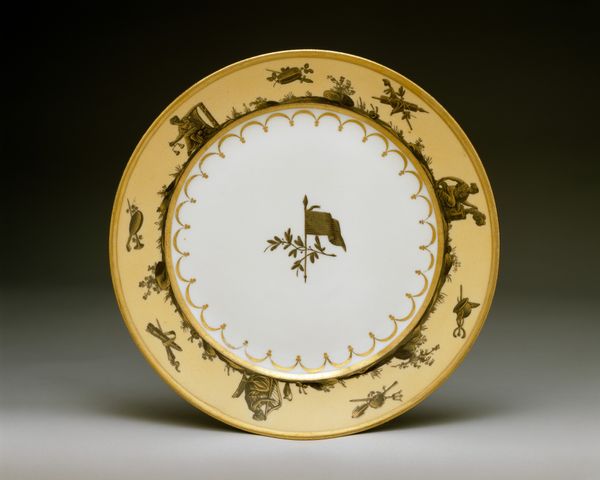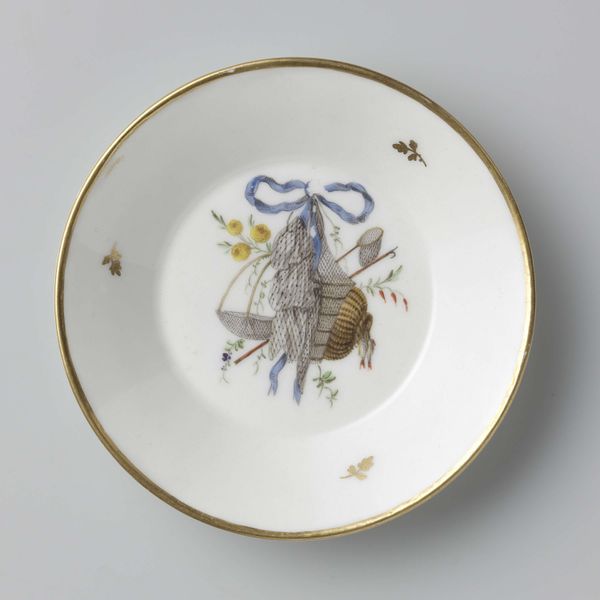
Saucer from a tea service for twelve 1807 - 1808
0:00
0:00
ceramic
#
simple decoration style
#
circular oval feature
#
decorative element
#
egg art
#
3d printed part
#
cake food
#
ceramic
#
culinary art
#
stoneware
#
france
#
ceramic
#
food art
Dimensions: 1 1/4 x 6 x 6 in. (3.18 x 15.24 x 15.24 cm)
Copyright: Public Domain
Curator: This beautiful saucer, part of a tea service by Christophe-Ferdinand Caron, was crafted between 1807 and 1808. What strikes you about it? Editor: It’s so delicate! The small bird at the center is charming, but I’m curious about the intricate border design in gold and purple. How do we interpret these decorative elements? Curator: As a materialist, I’m drawn to the labor and resources required to create this piece. Consider the kaolin clay, likely sourced from a specific location and meticulously processed. Think about the skilled artisans involved in the painting, the firing, and the gilding. This wasn’t just about aesthetics; it was about production. Editor: So, you're suggesting we should look beyond just the artistic intent and consider the social and economic factors behind its creation? The raw materials, the craftsmanship… Curator: Precisely. The decoration, seemingly just decorative, represents a very specific market. Porcelain of this quality signaled wealth and status, highlighting the consumer culture of the early 19th century. Who was this service for? What did it mean to own such items? It transcends "culinary art." Editor: That makes so much sense! I was so focused on the aesthetic, but the act of acquiring and displaying it speaks volumes. Were pieces like these inherited then? Is the symbolism tied to wealth or aristocracy? Curator: Possibly inherited or newly acquired—each carries different implications about social standing. Let's delve deeper into the means of production in Caron’s workshop to unearth those cultural narratives, viewing the saucer as more than just a vessel for tea, but rather a material manifestation of social hierarchies and the values of the era. What stories are the producers telling? Editor: I hadn't thought about it that way. I see it so differently now – as a cultural artifact embedded in its specific time. Curator: Exactly. By examining the materials, production, and context, we move beyond simple appreciation toward a deeper understanding of art’s role in society.
Comments
No comments
Be the first to comment and join the conversation on the ultimate creative platform.
